The Changing Storyline of Indian Cinema
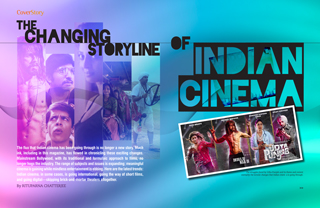
The flux that Indian cinema has been going through is no longer a new story. Much ink, including in this magazine, has flowed in chronicling these exciting changes. Mainstream Bollywood, with its traditional and formulaic approach to films, no longer hogs the industry. The range of subjects and issues is expanding; meaningful cinema is gaining while mindless entertainment is ebbing. Here are the latest trends: Indian cinema, in some cases, is going international, going the way of short films, and going digital—skipping brick-and-mortar theaters altogether.
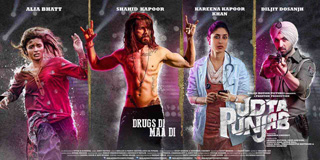
The struggles faced by Udta Punjab and its theme and content exemplify the tectonic changes that Indian cinema is going through.
Something has been happening in Indian cinema recently. You know it, you can feel it, you can see it everywhere, and yet there is no term to describe it. The new movies aren’t quite mainstream as they have been, but neither are they exactly arthouse cinema. They aren’t quite “commercial” and they aren’t quite “parallel.” A recent, excellent example is Udta Punjab. Starring big Bollywood stars like Alia Bhatt, Shahid Kapoor, and Kareena Kapoor, Udta Punjab revolves around the real life drug tragedy devastating the state of Punjab. Unlike your typical Bollywood film, though, this one was drowned in controversy much like typical art films, including endless troubles with India’s infamous Central Board of Film Certification (CBFC), leakage of a pirated version online before release, and so on. Yet, it has managed to collect over Rs. 59 crores, as big mainstream Bollywood formula films do.

(Right) Shot in only 20 days with a modest budget of Rs. 3 crore (less than half-a-million dollars), Raman Raghav 2.0 earned back more than double its costs by making Rs. 6.7 crore in Indian theaters in just 10 days.
Production houses like Phantom Films—one of the two behind Udta Punjab—have been at the helm of blurring the line between arthouse and commercial cinema. Phantom’s home in Oshiwara is airy and spacious—resembling a Delhi college campus more than the film production houses in the crowded, air-starved suburb of Andheri, the hub of the Hindi movie business. A yellow airplane is parked on the grass downstairs while four official Phantom dogs, including one called Dhishoom, laze around its open kitchen. Upstairs, posters of films like Gangs of Wasseypur and Ugly hang proudly on the walls of co-founder and veteran filmmaker Anurag Kashyap’s office. Several posters are in French because they were screened at the prestigious Cannes Film Festival. Kashyap’s latest, Raman Raghav 2.0, also screened at Cannes, is a psychological thriller based on a notorious, real-life serial killer, played by acclaimed actor Nawazuddin Siddiqui, which forces viewers to reflect on the darkness within themselves. Shot in only 20 days, this small budget film—made for approximately Rs. 3 crore—earned back more than double its costs by making Rs. 6.7 crore in Indian theaters in 10 days.
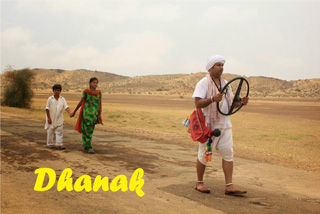
(Left) Nagesh Kukunoor’s Dhanak: Even something in a niche, such as this children’s film, has turned out to be a hit.
Even a small film, and that, too, something as niche as a children’s film with an apparently limited audience, like Nagesh Kukunoor’s Dhanak is doing well. While we don’t know the exact figures, one would assume the costs to be even less than Raman Raghav 2.0, since there are no big actor names associated with it. Dhanak collected Rs. 2.31 crores in five days at the box office.
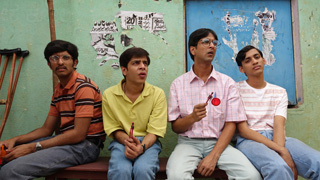
(Left) Brahman Naman: An Indian avatar of American Pie? Is this the beginning of the teen sex comedy genre in India?
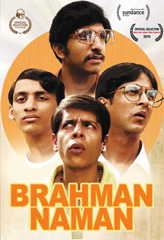
But it’s not the numbers alone that point to the changing face of Indian cinema. Look at the stories being told. Brahman Naman—a sex comedy directed by controversial filmmaker Qaushiq Mukherjee was shown at the Sundance Film Festival, one of the most high profile film festivals in the world. The film is about a bunch of nerds who form a champion college quiz team. Their goals? To win the all-India finals and lose their virginity! Margarita with a Straw probes the tale of a disabled person’s sexuality, while Aligarh is a biopic about a professor at Aligarh University who is suspended from his job and his life made hell, only because of his sexual orientation. Short films are a trend in themselves, and here too, we come across themes that dive deep into social issues. Shamas Nawab Siddiqui’s award-winning and critically acclaimed social drama Miyan Kal Aana screened at Cannes last year and is merely 17 minutes long. Loosely translating as “Mister Come Tomorrow,” the film revolves around the little-understood and controversial Nikah Halala law of Islam. Judging by the incredible diversity of these examples, it’s clear that the storytelling traditions of Indian cinema are undergoing tectonic shifts.
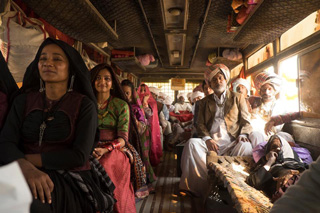
(Left) Parched traces the painful struggles of four Indian women, and their talk about men, sex, and their lives in the parched rural areas of Gujarat.
Cinema in India also has strange issues of offense and censorship to battle. He may not be a Khan, but the CBFC (Central Board of Film Certification) head Pahlaj Nihalani hogs headlines very often for the seemingly endless instances of censorship imposed not just on films but also on their trailers—so much so, that the Mumbai High Court asked him to stop acting like a “grandmother” with respect to a case against Udta Punjab. In such an environment, the fact that a film like Brahman Naman is a Netflix exclusive releasing in July might seem like a miracle. Film festivals are the other outlets. Parched—which traces the painful struggles of four Indian women, and their talk about men, sex, and their lives in the parched rural areas of Gujarat—premiered at the well-reputed Toronto International Film Festival (TIFF) last year where it received a standing ovation. Ever since, it has been traveling to every major film festival across the world, as well as playing in theaters in Europe.

(Left) Talvar is based on the infamous Aarushi Talwar murder case that shocked the nation in 2008.
Are these changes a mirror to real life? Critically acclaimed actor Neeraj Kabi would believe so. “There is a shift in Indian society. It is very hard to put Indian society into one place, but what is happening at a very conscious [level] is the appreciation of audiences for cinema that isn’t just mindless entertainment. Also, the lack of sensibilities in societies at large, both European and American, seems to have brought down human empathy. Perhaps it’s capitalism, perhaps terrorism, perhaps consumerism. So viewers are looking at something to make them reflect on who they are, and many films are doing that for them, like Talvar,” he says, referring to the film based on the infamous Aarushi Talwar murder case that shocked the nation in 2008. There are other factors, opines Kabi, for the sea change in film audiences’ tastes. “Thanks to foreign trips, going abroad in throngs for higher education, globalization, and arguably, most important of all, the Internet—watching shows like Breaking Bad and Game of Thrones—Indian sensibilities of both filmmakers and viewers are being exposed to the kinds of cinema that didn’t happen before. Both viewers and filmmakers want greater freedom, beyond the bounds of traditional Bollywood fare, even though these are smaller films.”

(Left) India’s official entry to the Oscars this year, Court, was a small budget film, apparently made purely for the love of cinema, by first-time director Chaitanya Tamhane in a mixture of languages including Marathi, Hindi, Gujarati, and English.
Relative to previous big-budget entries like Lagaan, India’s official entry to the Oscars this year, Court, was therefore almost absurd. It was a small budget film, apparently made purely for the love of cinema, by first-time director Chaitanya Tamhane, in a mixture of languages including Marathi, Hindi, Gujarati, and English. The producer, Vivek Gomber, is an actor who simply wanted to be more in control of content, had a good rapport with Tamhane, and so put his entire life’s savings into producing this film. An absurdist portrayal of harrowing injustice in Indian society, Court revolves around the story of an elderly Dalit folk singer who is arrested for the apparent “suicide” of a sewage cleaner. As the court case drags on—as court cases in India do—filled with ridiculous excuses and delays, the film delves into the lives of the lawyers and the judge as well.
While nobody is sharing any numbers, production houses from mainstream cinema have also begun to sit up and take notice of these trends. Even as the star system and its mega-budget films dominate Bollywood, with the glossy song and dance numbers that big production houses used to churn out in the 90s, there’s now space for commercial films that are far different: Badlapur, NH 10, and Talvar, for example. Today, a mainstream production house like Eros finances a film like Aligarh, and the big daddy of production houses, Yashraj Films—famous for its glitzy, stereotypical family dramas—greenlights a film like Titli, which essentially deals with the darker side of family relationships.
After making mainstream big budget Bollywood films like Teen Patti and Shabd—starring the likes of Amitabh Bachchan and Aishwarya Rai Bachchan respectively—Leena Yadav made Parched. “After these films, I wanted to make a film with no boundaries. We made Parched with great difficulty. It came out [because] I was dying to tell the story,” says Yadav.
Going International
“In American indie cinema, there
are many films being made, but not
all are being released. We [in Indian
cinema] are in the same space,” says
London-based filmmaker Anu Menon.
“There’s the so-called big bad commercial
cinema, and there are these new
voices fighting to be heard. Earlier one
would say, ‘I make ‘Bollywood.’’ Now you
just say, ‘I am a filmmaker.’ Now, it’s
just cinema. It no longer matters where
it comes from. It is international cinema
that can just travel across like, say,
Lunchbox. Moreover, earlier watching a
Bollywood film was like an occasion,
like an experience, like we’re going out
to eat Indian food for dinner. Now, it’s
all about content, just like watching
a French film,” he says. His film Waiting
stars Naseeruddin Shah and Kalki
Koechlin in lead roles. Waiting showcases
a special relationship shared between
two people who befriend each other in
a hospital waiting room while nursing
their respective comatose spouses, and
who learn together to cope with grief
while simultaneously discovering hope.
Lunchbox, India’s entry to the Oscars a few years ago, is a great example of another trend—international collaborations. The film, starring internationally acclaimed actors Irrfan Khan and Nawazuddin Siddiqui, was jointly produced by various studios in India as well as the United States, Germany, and France. Similarly, Parched is Yadav’s first international feature film with Hollywood veterans. Russell Carpenter, known for his collaborations with James Cameron, shot the film, and Oscar nominee Kevin Tent edited it. Today, the film has a 91% rating on Rotten Tomatoes. Masaan is among the most well-known films of this breed: an Indo-French co-production, it wowed Cannes last year, won multiple awards, and arguably became the poster child of independent Indian cinema. More will be coming, as Manish Mundra’s Drishyam Films, the go-to production house for small-budget indie cinema, has collaborated with the renowned Sundance Institute to establish the Drishyam Sundance Screenwriters Lab to help writers develop their work under international mentors.
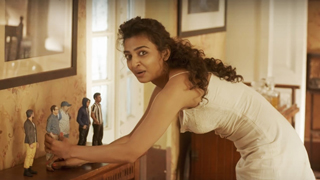
(Right) Ahalya—the spooky short film that went viral. “Short films are a great trend. You get more freedom to explore,” says filmmaker Sudhir Mishra.
Going Short
Another trend has been that of
short films. Even established filmmakers
like Sujoy Ghosh (who delivered the
blockbuster called Kahaani) and Sudhir
Mishra are making short films like the
14-minute Ahalya and the 16-minute
Kirchiyaan, respectively. One big reason
is that these are low budget, take little
time to shoot, and find willing financial
backing from big brands like Royal Stag.
Finding financing for a film is still tough,
so the short film makes the filmmaker’s
life a little easier. “Short films are a great
trend. You get more freedom to explore.
You go back to that sense of freedom
that came with a small unit, like with
your first film. You are back in touch with
that initial impulse of why you wanted
to be a filmmaker,” says Sudhir Mishra.
Like Jack’s beanstalk in the fairytale, the number of film festivals is growing endlessly. Many of these especially help short films, which, due to their low production costs, enable aspiring filmmakers to fulfill their dreams. Siddiqui’s award-winning Miyan Kal Aana for instance, has more than recovered its costs while touring film festivals across the world. Court, too, more than recovered the money invested in making the film through awards won at festivals across the world.
“Festivals are amazing: you get critical acclaim as well as commercial wins, provided you make a truthful film,” says Siddiqui. “Even a figment of imagination should be presented with so much truth that the audience should feel completely with the character...we cannot smell cinema but it should be so real that the audience must be able to smell it. If the film is about Bombay, viewers should be able to smell Bombay. Award money really goes a long way to reclaim your costs. My suggestion to beginners would be to first make short films and also target festivals that pay, so you can aim to recover your costs,” he says.
Going Digital
All kinds of revenue models have
crept up. Sandeep Mohan (who, ironically,
has assisted Sanjay Leela Bhansali,
famed for his mega budget Bollywood
films) now makes films for as little as Rs.
10 lakh. Instead of theaters, he takes his
films to his viewers, screening in living
rooms, offices, actually wherever anybody
is happy to offer a screening, all
over the world. He then asks the audience
to pay whatever they like, only if
they enjoyed the film.
Sure, theaters remain the “Holy Grail” in India. But, according to Reuters (quoting digital film distribution network UFO Moviez), India has about 10,000 cinema screens across a country of 1.3 billion. This means that for every million people, there are less than eight screens, compared with 30 in China and 120 in the United States! So even if India is the biggest movie churner in the world, there are just not enough theaters.
No wonder then, that the Indian, and especially indie, filmmaker’s savior remains the Internet. Netflix launched this year in India, serving as manna to smaller filmmakers. Film critic turned filmmaker Sudhish Kamath made a lowbudget indie film, Good Night, Good Morning. Being in English, its audience was even more limited. However, courtesy of Netflix, Kamath claims to have recovered a huge chunk of production costs.
Sailesh Dave, who produced Sulemani Keeda, a low-budget indie comedy, released it briefly in 40 theaters in six different cities, where it ran for at most three weeks (larger Bollywood films run for much longer.) Not many television and satellite channels were keen on buying the rights. So they released the film through The Viral Fever (TVG), a digital entertainment channel, where people could watch the film for as little as Rs. 99 (less than $2).
Seven out of 10 Indians watch at least one online video per month. In the next three years, nearly 90% of all Internet data in India is expected to be used towards streaming movies and television. And by as soon as 2019, media in video format is expected to grow up to 74% of all Internet traffic in India. Clearly, this new reel in Indian cinema has not only arrived, but is all set to grow longer both in terms of film making and viewership.
Rituparna Chatterjee is a writer and journalist who shuttles between San Francisco and Mumbai. A former foreign correspondent for The Economic Times, she is currently writing two nonfiction books, including an authorized memoir of the actor Nawazuddin Siddiqui, to be published by Penguin Random House India in 2017.
![]()
![]()
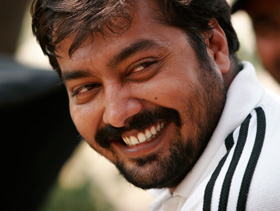
“Indian indie films made in regional languages might be more viable commercially”
Following are excerpts from our interview with well-known filmmaker ANURAG KASHYAP.
Indian [films] that are really different will find themselves on Netflix or YouTube because traditional movie theaters will stop giving them that kind of space. In a space-starved city like Mumbai especially, there is no space to create any new multiplexes. Chinese cinema, for instance, has evolved greatly because they have more multiplexes. So every type of film gets a chance. In India, the film doesn’t get its full run. And today’s new kind of indie, experimental movies, take time to pick up [and get noticed].
Several indie films are being made in the English language today but again, they might not do as well unless on, say, Netflix. Films like Bombay Boys, Hyderabad Blues, and so on were made in the 1990s and had that early mover advantage. They were funny and subversive for that time.
Independent [films] that are made in regional languages like Marathi and Bengali on the other hand, have relatively more promising chances of doing better commercially. If a film like Court, which uses four languages including Marathi, Hindi, Gujarati, and English, was released as, say, a Marathi film, it would have made a lot more money. It did not benefit from the government subsidy of these regional language films. Killa, a Marathi film, on the other hand made nearly Rs. 12 crore.
![]()
![]()
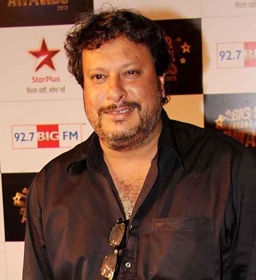
“…Respect for cinema as an art form is missing in this country.”
Excerpts from our interview with TIGMANSHU DHULIA.
The whole point of giving cinema weight as an art form just isn’t there in India. We still make very bad films. Earlier, the likes of Bimal Roy made many socially relevant as well as commercially successful films. It is this balance between commerce and art which is missing in Indian cinema today. Filmmakers like Mani Ratnam and Shekhar Kapur somewhat bridged that through films like Roja or Bombay and Bandit Queen.
The audience for arthouse cinema isn’t growing. Until the 80s, some of the art films were still seen in theaters. But then multiplexes came and changed everything. Earlier, in the premultiplex era, films stayed for much longer in theaters, sometimes growing on the audience. They ran for 50 weeks, 70 weeks. And hence, silver jubilees of Sholay or Mughal-e-Azam were celebrated.
Moreover, piracy is a huge problem. Unless your film has a very big star, it is still very difficult to show in theaters amidst all these constraints. The solution is greater government support for arthouse films and more, many more theaters.
But for that, cinema first needs to be respected in India. Look at the French and the respect they have for French cinema! Classical filmmakers like K. Asif, who made Mughal-e-Azam, didn’t have a fancy film school degree but he had such a reverence for our culture and our language, and it showed in the cinema he made. This reverence for our Indian history and culture is missing in filmmakers who grew up in Bombay. Many of them are ignorant about the politics and the realities of our country. Neither do they have any compassion for our country. So it is actually filmmakers like myself, Anurag Kashyap, Sujoy Ghosh, and others...we are all from small towns and educated and hence, our cinema reflects the realities of India, something that you don’t find in the lineage of well-known Bombay filmmakers.
Tigmanshu Dhulia is an award-winning filmmaker, director, casting director and actor. His film Paan Singh Tomar won the National Award for Best Feature Film in 2012; his film Saheb, Biwi Aur Gangster gained much critical acclaim. He also wrote Mani Ratnam’s celebrated film Dil Se, starred in cult film Gangs of Wasseypur and was the Casting Director for Shekhar Kapoor’s Bandit Queen.
![]()
![]()
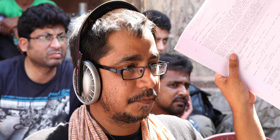
“The filmmaker is the most vulnerable person in this country today.”
Excerpts from our interview with
BIKAS
RANJAN MISHRA.
The indie filmmaker is the most vulnerable person in India today. Making a film has its share of difficulties, but getting it released is a whole different scenario. My film Chauranga is a social drama set in rural India. The story is of a Dalit [lowercaste] boy who is killed for writing a love letter. The Censor Board wanted several scenes to be deleted: a love making scene with cuss words being used and a scene showing a Dalit boy being tormented. If I wouldn’t have cut them, my film would have been banned. I don’t understand this…on one side, Mastizaade, a typical big budget commercial Bollywood sex comedy, made in such bad taste, gets an A [adult] certificate. So shouldn’t they certify a social commentary like Chauranga also thus, with an A certificate? But if I had not adhered to the five cuts then I don’t get any certification at all, which is censorship. Nobody openly uses the word “banned,” but you are being denied [certification] if the Censor Board’s cuts aren’t followed, and without certification, who will screen your film?
National Award-winning filmmaker Kamal Swaroop’s documentary Dance of Democracy / Battle for Banaras based on the historic Narendra Modi-Arvind Kejriwal electoral fight in May 2014 wasn’t even given certification. Why?—because it showed the Indian Prime Minister in a bad light. It’s a documentary with real life footage. So it is okay to use vulgar rhetoric in real life, but you cannot depict it on screen. Without certification, the film can only be shown in festivals—that, too, a select few.
The standards [of the Indian Censor Board] are different for Hollywood and Indian cinema. For example, the trailer of a film like Aligarh [based on the real life story of a professor at Aligarh University, who was fired because of his sexual orientation] was given an Adult certificate only because it discussed the subject of homosexuality. But a film like The Danish Girl has full frontal nudity but gets through! Aligarh, on the other hand, isn’t about the depiction of the human body but the depiction of a certain type of sexuality. So the current Censor Board has double standards. It also doesn’t seem to fear nudity. But it is here to curtail the politics of sexuality.
Then, every ministry wants a say in cinema because they realize the power and the glamour of cinema. Shouldn’t they be regulating the sales of cigarettes rather than [coming after filmmakers]? Isn’t it bizarre that we stand up to sing the national anthem while watching mindless sex comedies like Mastizaade or Kya Kool Hain Hum?
Another layer of censorship comes from bodies which have nothing to do with cinema in the first place. The Animal Welfare Board of India, which has no idea about cinema or the nuances of film making, demands to see your script. Your film hasn’t even been made. There is control at the script level itself. So that’s pre-censorship! I understand, appreciate, and support the idea that animals should not be harmed in the making of a film. But the authorities need to understand cinema, how films are made and how to read a script. If a person is being killed in a film, obviously he is not being killed in reality. It is the same with [an] animal. We had an insanely difficult time in Chauranga with the scene of a pig [a character named Motki] being killed on screen, but obviously the wounds were all makeup and in reality the pig actor was pampered rather than harmed. The body is illiterate when it comes to the process of film making and the medium of cinema.
In India everybody has an upper hand over the filmmaker. The filmmaker is just not respected in this country.
Bikas Ranjan Mishra is the writer/director of the awardwinning film Chauranga and a short film, Dance of Ganesha. He has served on the juries of Cannes Critics Week, International Film Festival Kerala, and Osian’s Cinefan Festival of Asian Cinema, Delhi.
![]()
![]()
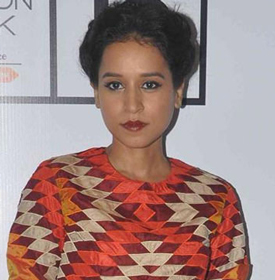
A proliferation of roles for actors
Excerpts from our interview with TILLOTAMA SHOME.
If you are an optimist, then on a certain day you wake up and feel that yes, there is a new wave of Indian cinema. But if you wake up pessimistic, then it feels like old wine in a new bottle. So it’s a matter of perspective. An actor’s life, though, is so fragile, so vulnerable, and so at the mercy of others. So an actor’s sense of self plays a huge part in maintaining sanity even in today’s scenario.
What’s different now is that the Internet is a huge deal and it is just at the beginning of its explosion. It is about content and the future of this content will not be ruled by the rules of regular cinema. There is a lot of independence; censorship is missing right now on the web, which, too, is a good thing. The storylines don’t have to be ruled by the rules of commercial cinema. The roles are not necessarily “hero-driven.” So the explosion of the web has given an actor a space that he or she wants to make.
The idea of the spectator has changed, too. In India, where theatres are still such a big deal, people are watching films on their phones. But it is a great space for actors like us, who are not stars, to get good roles and give good performances. But also, well-known faces like the actor Radhika Apte and filmmaker Sujoy Ghosh [who made the popular thriller Kahaani] have explored this format. [Ghosh made a short film available on You-Tube called Ahalya staring Apte, which went viral.]
Nayantara’s Necklace [a short film about middle class aspirations co-starring Konkona Sen] was shot in just two days. I had done a short film called Boond in the pre-digital era in India for content. When Boond released in 2009, there was no market for short films. Today, it might have done better. With short films being shown on YouTube, what was earlier a showreel for a new director has become a legitimate way for storytelling. And so us actors are getting to do roles we just wouldn’t get to do otherwise.
Tilottama Shome is an award-winning actress who was first etched in public memory for her role as Alice, the domestic help in Mira Nair’s film Monsoon Wedding and more recently for her award-winning performance in Qissa, also starring Irrfan Khan.
![]()
![]()
Enjoyed reading Khabar magazine? Subscribe to Khabar and get a full digital copy of this Indian-American community magazine.
blog comments powered by Disqus












